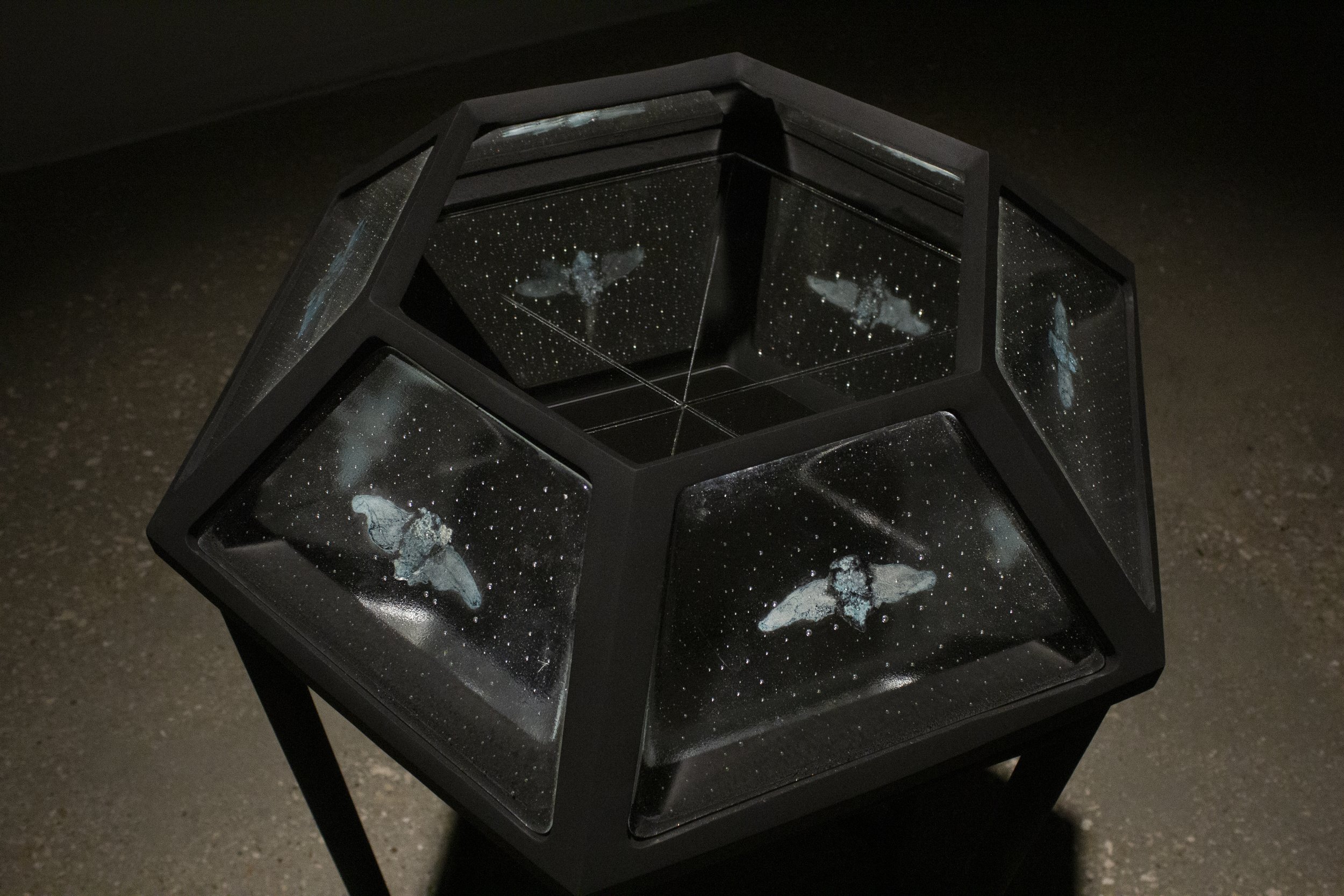
About
Liz Markum is a queer artist based in Texas whose work reexamines the remnants of the local natural world through a lens of curiosity and reverence. Using materials and processes such as cast glass, cast metal, print media, woodworking, and metalworking, they create sculptures that serve as reliquaries of ecology. They received their BFA in Sculpture at the University of Texas at Arlington in 2021 and their MFA in Sculpture at the University of North Texas in May of 2024. They are currently an art educator and bronze art foundry assistant.
Artist Statement
Through the use of intentional materiality and layered structures, I turn the remains of creatures into experiences of wonder and introspection. The objects and experiences I create are embedded in an overlapping theoretical space between relics and fossils, sacred and secular. Utilizing the familiar visual language and iconography of institutions of reverence such as science and religion, I call respect and awe to the creatures at hand. Throughout my practice I collect and cast sustainably sourced specimens, tenderly capturing their likeness of physical and ephemeral traits. Working with specimens as small as cicadas to as large as cows, I encapsulate parts of their essence in castings of glass, porcelain, iron, and bronze. Each of these permanent materials elevates different aspects of the creatures in life and death, calling upon their lore and common associations to invoke dialogues surrounding them. These precious mediums are each tied to long histories of tradition and craft, further driving the narratives written within the work.
These castings are presented through structures of steel, wood, and mirrors to heighten and project their presence. Dramatic lighting transforms these objects into experiences, as their combination with mirrors and glass enacts reflections and refractions of light and imagery in dimly lit spaces. These materials create ephemeral portals between what is and isn’t physically here. Steel and wood provide solid foundations of strength and presentation, enacting the strands of narration outside of the lore of the specimen itself. These forms use designs and visual language already familiar to viewers from institutions such as museums and churches, pulling from the perceived value of these places without the limitations of such institutions. Speculative narratives are played upon within the work as the mythos of the creatures blend with abstracted iconography. These hybrid forms prompt questions of past and future lore of ecology, bordering the line of eco-gothic and romanticism. The combination of casting and structures creates contemporary reliquaries of the creatures of the surrounding environment- both native and non-native to the land.
The casting materials themselves play a hand in the work to build a web of interpretations through their intrinsic characteristics and historical uses. Glass creates a sense of ephemerality as its range of transparencies places it both here and somewhere beyond. It is a portal and presence simultaneously. Iron and bronze create literal and visual weight, imbued with heavy physicality and monumental connotations. Porcelain casting calls to traits of earthen nature, petrified yet fragile. These materials are used both as the body of relics and the housing of reliquaries, preserving and amplifying the organics they resemble. The intensity and process-heavy nature of all of these materials result in further bonding and care between myself and the specimens I am encapsulating, as these prolonged practices require time and tenderness to render their likeness.
Through the use of localized specimens, I call for a moment of reconsideration for the creatures and ecology around us. In displaying these animals with beauty and ambiguity, I ask for viewers to reevaluate their associations with the creatures at hand so that they look upon the living ones in their daily lives in a new light. This is a step in the grander scheme of calling for respect and care for ecology on a multitude of scales.

